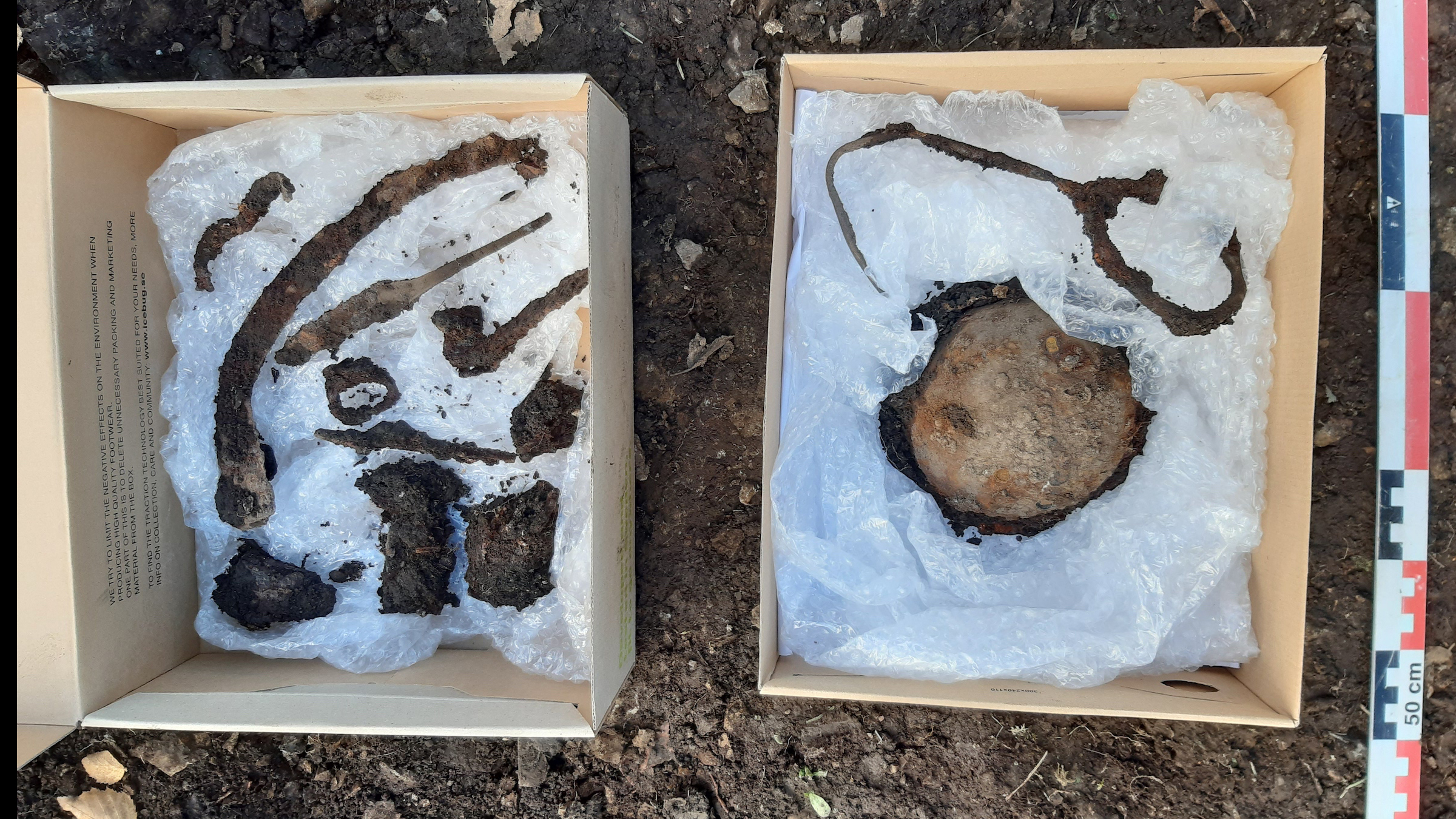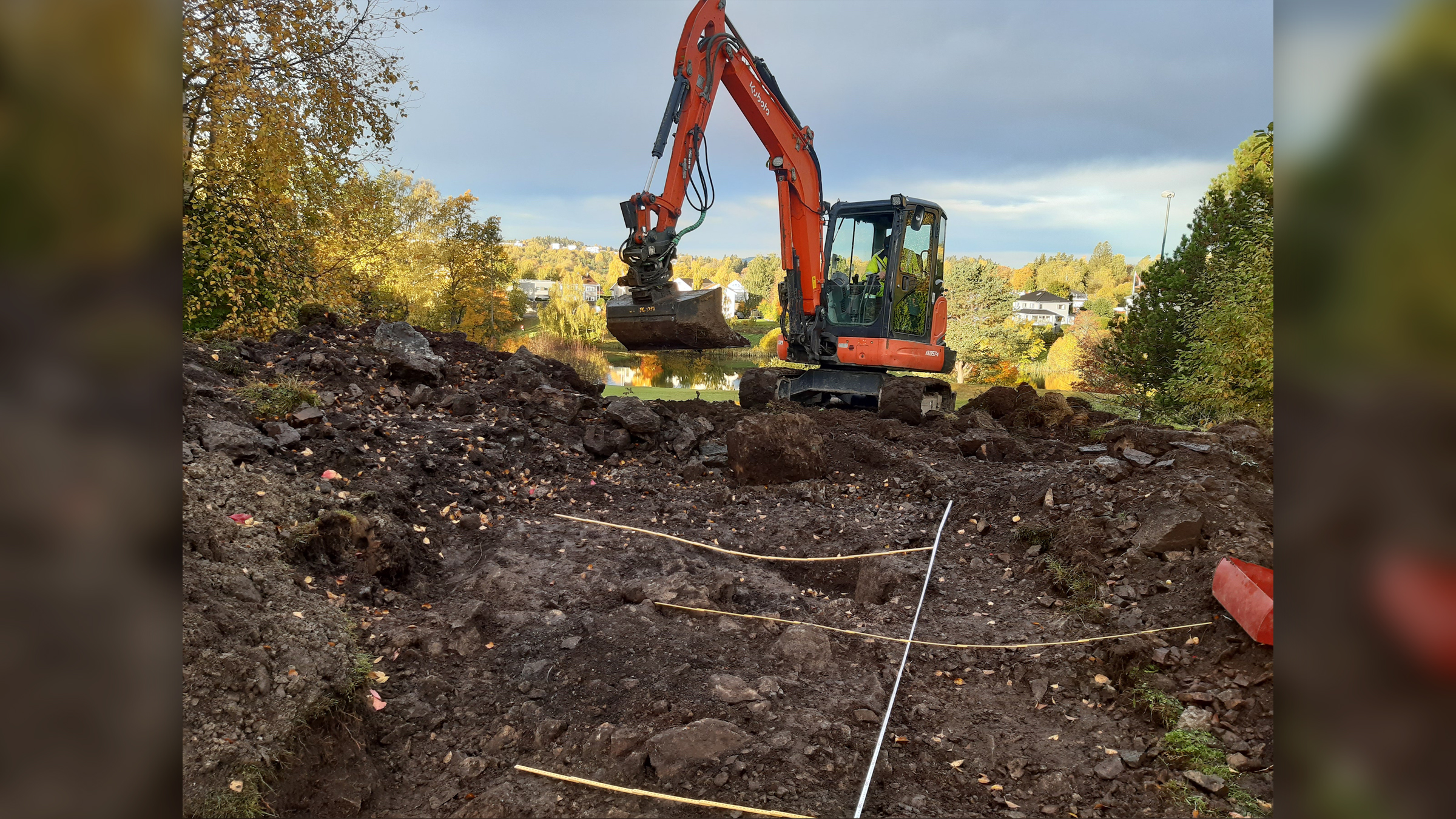Rare, 'high-status' Viking burial unearthed in a garden in Oslo
Archaeologists have excavated a rare Viking burial in Oslo containing the remains of a high-status individual and a variety of grave goods.

Archaeologists in Oslo, Norway, have uncovered a rare Viking grave dating back around 1,100 years — a time when the Vikings were venturing throughout Europe and the North Atlantic.
The grave holds the remains of a cremated individual who archaeologists believe was likely a male. He was buried with a variety of grave goods, including two knives, a shield and a brooch that could have been used to fasten a cloak.
"In Norway, cloak brooches like these are almost always discovered in presumed man's graves," said Ann Zanette Tsigaridas Glørstad, a curator at the University of Oslo's Museum of Cultural History who is analyzing the artifacts. "The cloak brooch in this grave is unique in that it has preserved an unusually long pin, around 20 cm [centimeters, or 7.9 inches], which means that it must have been a rather prominent part of the costume of the deceased," Tsigaridas Glørstad told Live Science in an email.
Conservation work on the artifacts is ongoing, and it's not clear yet what the knives were used for. "For both men and women, sharp knives were essential for everyday use. The knives in the grave are of different sizes, possibly because they were intended for different purposes," Tsigaridas Glørstad noted. "The smallest knife's blade appears to have been sharpened repeatedly, indicating that it was a well-used possession of the deceased that was used over a long period of time."
Related: Silver coin featuring famous Viking king unearthed in Hungary
Rare discovery
Viking graves in Oslo are a rare find. "This is the first to be excavated since the early 1900s," said Marianne Bugge Kræmer, an archaeologist with the Oslo Municipality Cultural Heritage Management Office who led the excavation of the grave. "The graves found in Oslo in the 19th and 20th century [were] mainly unearthed by non-archaeologists, and thus we do not have a lot of information from these graves other than the artefacts themselves," Bugge Kræmer told Live Science in an email. "This new discovery is therefore remarkable, and gives us the chance to a wider understanding of burial practices as well as the possibility to analyse bones and artefacts."
The burial was found in a hilltop garden during a survey that was conducted ahead of a planned construction.
Get the world’s most fascinating discoveries delivered straight to your inbox.
Aina Margrethe Heen Pettersen, a lecturer at the Norwegian University of Science and Technology in Trondheim, also noted that finding a burial like this is remarkable.
"Finding a well-preserved burial such as this is very exciting! While many artefacts from Viking-Age graves have been recovered in Norway over the years, many of these were discovered and dug up by antiquarians and private actors in the late 19th and early 20th century without being properly recorded," Heen Pettersen told Live Science in an email.
Who was buried there?
It's not clear who the person in the grave was, but he may have been wealthy. "The deceased appears to have been buried with a standard selection of objects commonly associated with men who have owned medium-sized or large farms," Tsigaridas Glørstad said. People who owned sizable farms in Norway at this time would be considered people of some wealth.
Marianne Moen, a senior advisor at the University of Oslo's Museum of Cultural History, thinks the grave goods indicate this was a person of wealth. "Judging from the objects in the grave, it seems this would have been a high-status individual," Moen told Live Science in an email. The Vikings are well known for conducting raids but it’s not clear if this man actually participated in armed conflict.

Owen Jarus is a regular contributor to Live Science who writes about archaeology and humans' past. He has also written for The Independent (UK), The Canadian Press (CP) and The Associated Press (AP), among others. Owen has a bachelor of arts degree from the University of Toronto and a journalism degree from Ryerson University.



